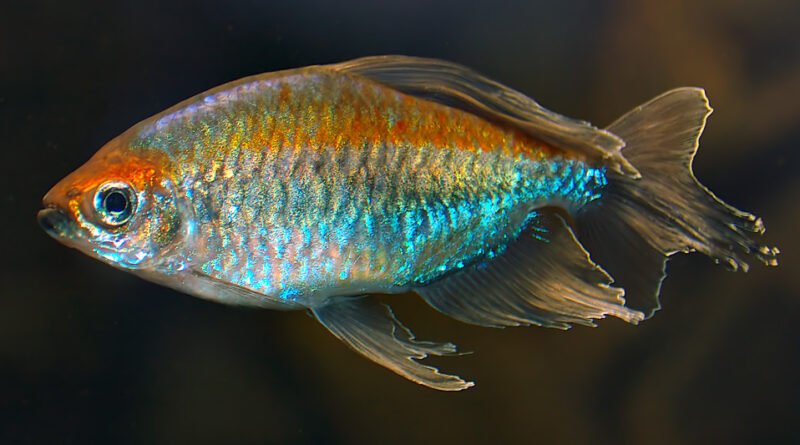An Exploration of the Congo Tetra: A Vibrant Aquatic Jewel from Africa
In the lush aquatic environments of the Congo River, Africa, resides a captivating group of fish that could easily rival the vivid beauty of South American tetras. One species in this group, the Congo Tetra, stands out with its shimmering spectrum of colors that serve as an enticing display in courtship rituals. Let’s dive into the world of the Congo Tetra.
Origins and Habitat
Native to the upper reaches of the Congo River in Zaire, these African characins inhabit streams, tributaries, ponds, and marshes. They thrive in slightly acidic waters, often gravitating towards areas with tall aquatic vegetation, minimal tree cover, and substrates composed of sand, silt, and clay. As social creatures, Congo Tetras swim in large schools, feeding on a diet of insects, crustaceans, worms, plant matter, and algae.
Although first discovered in 1949, the Congo Tetra only gained global recognition as a popular aquarium fish in the 1960s. In the 1970s, the Florida Fish Farms established a breeding line, and most specimens now found in pet stores can trace their lineage back to these early breeders. Remarkably, these descendants continue to display the authentic, vibrant colors and elegant flowing tails of their African ancestors.
Appearance and Markings
In the wild, the Congo Tetra can grow up to 4.5 inches. However, farm-bred variants, while retaining their full-winged nature and radiant colors, usually reach around 3 to 3.5 inches. Their bodies are long and slender, adorned with a striking iridescent sheen. Typically, they display a blue color on the upper part of the body, a blend of red and gold in the middle, and blue on the belly. Male Congo Tetras sport long, flowing fins that are a majestic purple with white edges, and their tail fin extends beautifully along the upward median line.
Tank Mates and Housing
The Congo Tetra, being a schooling fish, thrives when kept in groups of at least six of the same species. They are generally peaceful and coexist well with other similarly-sized or smaller fish. Suitable tank mates include other tetras, rainbowfish, and corydoras catfish.
Aggressive fish should be avoided as they may stress the Congo Tetra. Additionally, keeping them with fin-nipping species is inadvisable due to the potential for damage to the male’s beautiful fins.
As for housing, Congo Tetras appreciate still, deep, soft, peat-filtered water with low light levels, which can be achieved with dimmed aquarium lights and floating plants. They prefer dark substrates and have a penchant for grazing on downward-growing plants. Regular water changes and adequate space are essential to maintain their health and vibrancy. If water quality deteriorates, Congo Tetras may lose color or suffer damaged fins.
Diet and Feeding
As omnivores, Congo Tetras have a varied diet in the wild consisting of insects, worms, plant matter, and algae. In captivity, they readily accept live, fresh, and flake foods, as well as brine shrimp and blood worms. They should be fed small amounts multiple times daily.
If your Congo Tetras seem reluctant to approach food while you’re watching, don’t be alarmed. They may be shy and prefer to eat in privacy. If they are not getting enough to eat, consider using a floating feed ring to ensure they get their share.
Gender Identification
Males are generally larger, more colorful, and have a more complex fin structure, featuring a centrally extended caudal fin and a prominent dorsal fin. Females, on the other hand, are typically brighter with hues of silver and green and do not have the elaborate fins characteristic of the males.
Exploring the enchanting world of the Congo Tetra provides a glimpse into the vibrant aquatic life of Africa. These beautiful creatures serve as a shining testament to the diverse and colorful species that the African continent has to offer.




